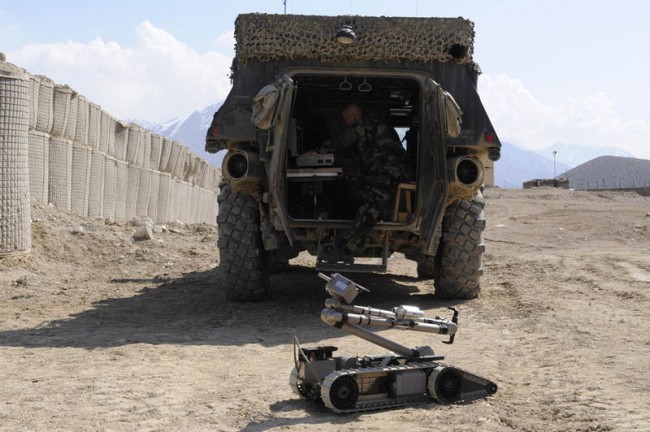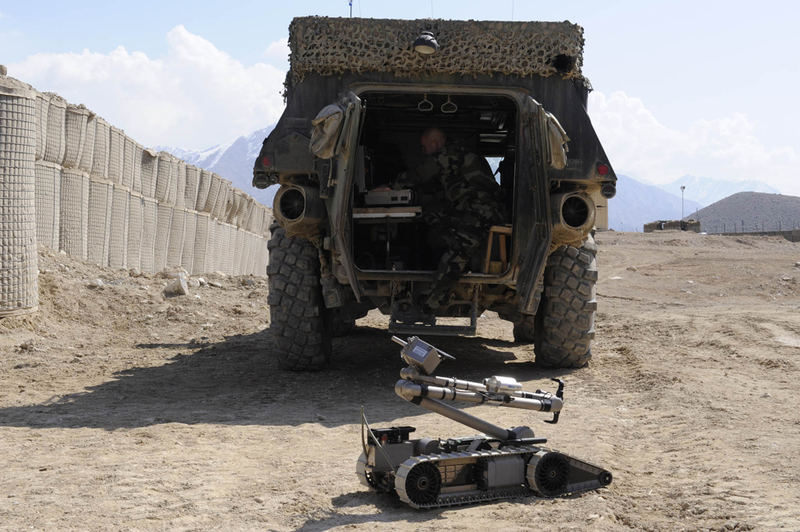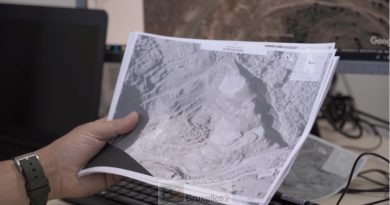The first Smart Defense projects (maj2)

(BRUSSELS2 to Chicago) The Secretary General of NATO, Anders Fogh Rasmussen, is going to present this weekend to the various officials of the Atlantic Alliance a list of various projects which will make it possible to rationalize certain costs and equipment, in particular for current (Afghanistan) or future (Isaf II) operations, etc. Fairly concrete projects that take into account the experience acquired in recent operations. The operations in Afghanistan and Libya in particular, off the coast of Somalia (anti-piracy) as well, have indeed been a factor in accelerating the maturation of certain needs. Despite the announced number of 25-30 projects, we are still far from this figure; the number seems smaller. At least initially. These are indeed the first "approved" projects. Others will be presented by each of the nations participating in the projects. In any case, it always seems difficult for States to engage in cooperation, including in times of budgetary restrictions. We also wonder why some of these projects, which seem "obvious", have not been implemented before.
Here is the list of the first 10 projects selected and will be officially presented tomorrow, according to the list that has been communicated to us:
- • Interface Universal of armaments (NATO Universal Armaments Interface). Objective: to allow the use of ammunition from different sources and nations on combat aircraft. A feedback from the "Libya" operation.
- • Demining robots (Remotely controlled robots for clearing roadside bombs). Here it is the "Afghanistan" experience that speaks, demining a road, making it suitable for traffic requires demining teams. The use of robots avoids exposing people too closely to improvised explosive devices. The objective is to develop joint tenders and facilitate deployment in multinational cooperation.
- • Maritime Patrol Aircraft Pool (Pooling Maritime Patrol Aircraft). Objective: to allow different maritime patrol aircraft from different nations to operate in a multinational pool and to be available to all other nations participating in the operation. NB: we are thinking here of the anti-piracy operation off the coast of Somalia. But also to the project of maritime surveillance of the maritime space off the European coasts in the north of Europe as in the Mediterranean. Project led by Germany.
- • Multinational ammunition stockpiles (Multinational Cooperation on Munitions). Objective: to facilitate the sharing of ammunition, particularly that which is highly-precisely guided, by promoting multinational arsenals. A feedback from the operation in Libya which proved how limited ammunition stocks were in the nations and that they could not immediately be replenished. A project led by Denmark. We remember that this country had suffered from lack of ammunition during the operation in Libya. That supposes " to have more flexible exchanges of ammunition between Allied Nations we insist at NATO. And it is particularly complex to implement, an officer told me. " You have to define where these stocks are located. To have only one, exposes to risks. It is also necessary to define the terms of access. Is it H24. And under what conditions. »
- • Multinational Aviation Training Center (Multinational Aviation Training Centre). Objective: by taking advantage of the experience of Afghanistan, reinforce the high-level training of helicopter pilots and ground crew. This project should make it possible to facilitate the deployment of helicopter detachments in support of NATO missions such as to prepare aeronautical advisory teams, which could train the Afghan national forces. NB: a project already started, in conjunction with the European Union (how EU-NATO cooperation works). Project led by the Czech Republic.
- • Pooling health modules (Multinational Medical Treatment Facilities). The objective is to develop standardized modular equipment. The other counterpart of this project - deployment in the field - will be developed within the EU by the European Defense Agency (same comment as above). Project led by France and Italy.
- • Logistics for refueling (Multinational Logistics Partnership for Fuel Handling). Objective: to optimize the supply of fuel to forces deployed with a multinational partnership. Project led by France and NATO
- • Reconnaissance, surveillance and joint intelligence (Joint Intelligence, Surveillance and Reconnaissance - JISR). Objective: to strengthen cooperation between national and NATO instruments (such as AWACS and AGS), joint training and education programs for intelligence specialists. Project led by France and the USA.
- • Maintenance of armored vehicles (Mine Resistant Ambush Vehicle - MRAP). Objective: to save money on the maintenance of deployed equipment. Project led by the USA.
- • Deployable Specialist Group (Deployable Contract Specialist Group). Objective: to create a group of specialists under contract with expertise in NATO procedures to establish and monitor contracts in theaters of operation.
These "new" projects should be clearly distinguished from the strategic programs already launched which have a more structuring aim, in particular the missile shield (read separate article soon) or the AGS (read: AGS, NATO's super drone), or equipment projects, mainly aerial:
- C17 Aircraft Sharing (Strategic Airlift Capability initiative SAC). Carried by 10 allies and 2 countries of the Partnership for Peace which have purchased and jointly operate several C17 strategic transport aircraft, located at the Papa base (in Hungary).
- Strategic aircraft sharing (Strategic Airlift Interim Solution (SALIS). This consortium includes 14 allies and 2 Partnership for Peace countries, which provide the Alliance with large strategic carriers, such as Antonov An-124-100, leased to a Ukrainian company. Very useful, and used for Afghanistan, especially in the strategic withdrawal phase. The problem: the hourly cost, which some States find "exaggerated" and the amount of which they want to renegotiate.
- AWACS. NATO operates with a fleet of 17 Boeing E-3A 'Sentry' equipped with the Airborne Warning & Control System (better known by its acronym AWACS). This allows the Alliance to have its own land or sea surveillance capability. It is one of the "rare pieces of equipment owned and operated by NATO itself", it is stated at Alliance HQ.
Let us also quote monitoring the baltic sky (Air Policing in the Baltics). The allies rotate surveillance and aerial policing over the three Baltic countries. These countries do not have sufficiently armed aviation. This is for the Alliance to reassure some of its members and show its muscles on the borders of Russia, in one case. We could also mention the case of Iceland, which is part of a similar logic: the European States take turns to provide aerial surveillance of this small piece of land, in a strategic area, the Arctic and the air route of Europe to the USA, in the second (Iceland), always with the neighborhood of Russia...
(Updated Sun May 20 with details on the projects and the countries driving them).


Comments closed.